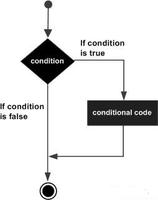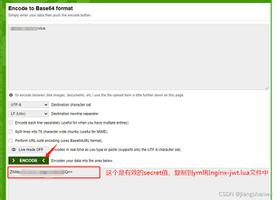详细解读Ruby当中的条件判断语句
Ruby的提供有条件结构,常见在现代编程语言中。在这里,我们将解释Ruby所有条件语句和修饰符
Ruby if...else 语句:
语法:
if conditional [then]
code...
[elsif conditional [then]
code...]...
[else
code...]
end
if 表达式用于条件执行。值为false和nil都是假的,其它的都是true。注意Ruby串使用的是elsif,不是else if也不是elif。
if 条件为ture则执行代码。如果条件不为ture,那么将执行else子句中指定的代码。
if 表达式的条件是保留字,那么,一个换行符或分号分开代码。
实例:
#!/usr/bin/ruby
x=1
if x > 2
puts "x is greater than 2"
elsif x <= 2 and x!=0
puts "x is 1"
else
puts "I can't guess the number"
end
x is 1
Ruby if 修辞符:
语法:
code if condition
if条件为真执行代码。
实例:
#!/usr/bin/ruby
$debug=1
print "debug\n" if $debug
这将产生以下结果:
debug
Ruby unless 语句:
语法:
unless conditional [then]
code
[else
code ]
end
如果条件为false,执行代码。如果条件是false,else子句中指定的代码被执行。
例如:
#!/usr/bin/ruby
x=1
unless x>2
puts "x is less than 2"
else
puts "x is greater than 2"
end
这将产生以下结果:
x is less than 2
Ruby unless 修辞符:
语法:
code unless conditional
执行代码,如果有条件的话为false。
实例:
#!/usr/bin/ruby
$var = 1
print "1 -- Value is set\n" if $var
print "2 -- Value is set\n" unless $var
$var = false
print "3 -- Value is set\n" unless $var
这将产生以下结果:
1 -- Value is set
3 -- Value is set
Ruby case 语句
语法:
case expression
[when expression [, expression ...] [then]
code ]...
[else
code ]
end
比较表达式指定的情况下,使用===运算符时,按指定的条款相匹配时执行的代码。
子句计算 when 与左操作数指定的表达式。如果没有子句匹配时,情况下执行的代码else子句。
when 语句的表达保留字,那么,一个换行符或分号分开代码。
那么:
case expr0
when expr1, expr2
stmt1
when expr3, expr4
stmt2
else
stmt3
end
基本上类似于以下内容:
_tmp = expr0
if expr1 === _tmp || expr2 === _tmp
stmt1
elsif expr3 === _tmp || expr4 === _tmp
stmt2
else
stmt3
end
实例:
#!/usr/bin/ruby
$age = 5
case $age
when 0 .. 2
puts "baby"
when 3 .. 6
puts "little child"
when 7 .. 12
puts "child"
when 13 .. 18
puts "youth"
else
puts "adult"
end
这将产生以下结果:
little child
以上是 详细解读Ruby当中的条件判断语句 的全部内容, 来源链接: utcz.com/z/315243.html





